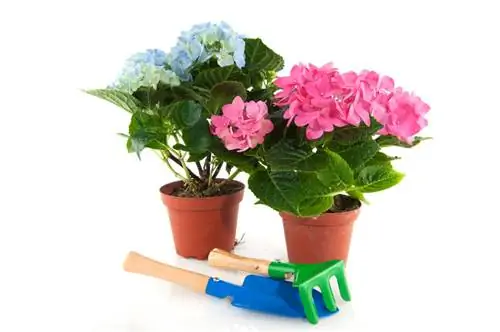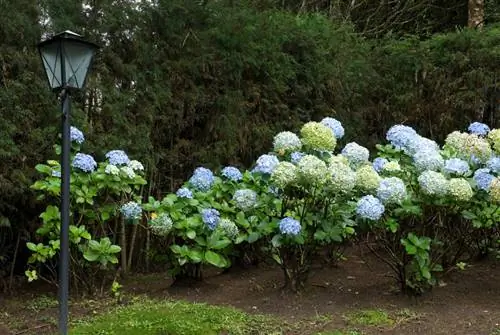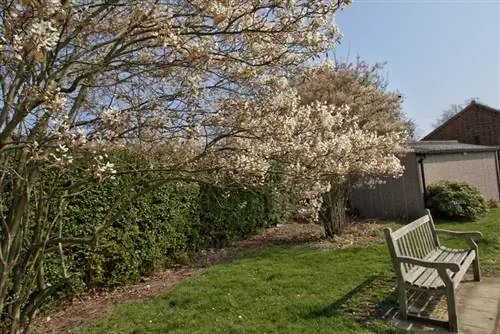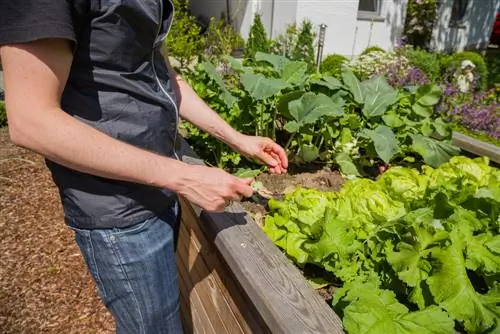- Author admin [email protected].
- Public 2023-12-16 16:46.
- Last modified 2025-01-23 11:20.
In garden retailers, hydrangeas are often sold in early spring as blooming harbingers of spring. You can transplant plants grown in pots into the garden until autumn, provided you pay attention to a few basic things.
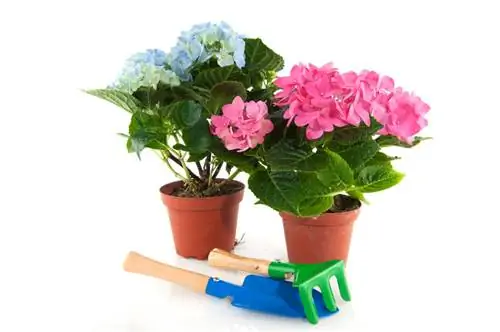
How should you plant hydrangeas in the garden?
To plant hydrangeas successfully, choose a partially shaded location, prepare a planting pit, use hydrangea or rhododendron soil, create a drainage layer if the soil is loamy and water regularly with soft water (except for red hydrangeas).
The choice of location
In its natural habitat, the hydrangea grows in the light shade of large trees. The offspring that thrive in our green areas also prefer partially shaded or shady locations. Choose a place protected from the wind with plenty of room to grow so that the beautiful flower umbels can fully develop.
Insert Hydrangea
Before inserting, you should place the pot in a water bath for about ten minutes. This allows the root ball to soak up moisture and the hydrangea has a small water reserve in its new location.
Preparation of the planting pit
While the planter is in the water, dig a planting hole that is significantly larger than the diameter of the pot. This means you don't have to squeeze the fine roots of the hydrangea when inserting them and you can spread them out loosely in the planting pit.
The ideal floor
In regions with heavily compacted, clayey soil, a drainage layer made of gravel or coarse-grain sand is recommended to avoid waterlogging. Since hydrangeas have very specific demands on the soil, it is recommended to replace the excavated topsoil with special hydrangea or rhododendron soil.
Insert Hydrangea
Place the hydrangea in the planting pit and fill it with soil. After planting, press the soil well and flush it in so that all root fibers are well surrounded by soil. Except for red hydrangeas, you should use soft water (rainwater) for watering so that the hydrangea does not lose its original color.
Water adequately
Since the hydrangea needs a lot of water to thrive, the plant needs to be watered regularly in the first few weeks, depending on the weather.
Tip
Slowly get the hydrangea used to the changed conditions in the garden. If possible, first place the plant in a protected place on the balcony or terrace and after a few days in the flower pot in the planned planting location. If the hydrangea has already gotten used to the outdoors before it is planted out, it will root particularly quickly and well.

